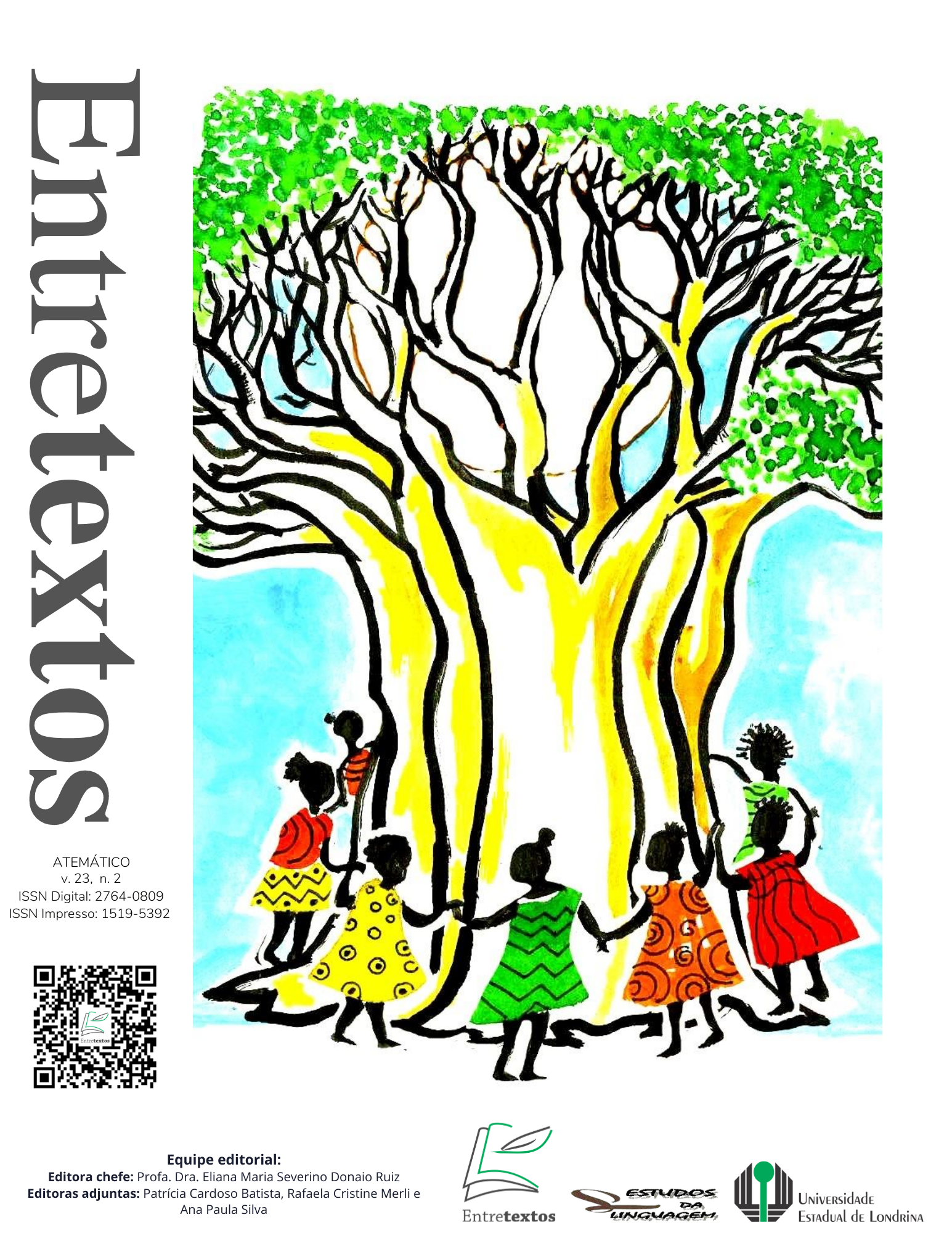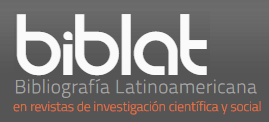Uses of the periphrasis ir + Infinitive in master's dissertations: a stylistic-functional look in the context of the discursive genre
DOI:
https://doi.org/10.5433/1519-5392.2023v23n2p290-312Keywords:
Academic sphere, Forms and functions, StyleAbstract
The purpose of this article is i) to reflect on the relationship between different instances of discursive genre and style; and the multifunctionality and forms of ir (go) + Inf periphrasis; and ii) to illustrate with a stylistic-functional analysis. From a functionalist and discursive perspective, twelve master's dissertations in the areas of Linguistics, Law and Mathematics were analyzed, and the main results show that: both types of periphrases - ir (present) + Inf and ir (future) + Inf - occur in the vast majority of dissertations, as variants in the function of the present future tense; the areas of knowledge display particularities of use - Linguistics and Law activate more the temporal subfunction of the indeterminate future and the historical future, while Mathematics mobilizes more the determinate future and the imperative deontic modality; the metadiscursive subfunction can be seen as characteristic of the genre; the authors do not always follow the average usage of the respective areas, showing individual styles either in terms of forms or in terms of (sub)functions. It is concluded that: style permeates all instances of the genre, in the tension between regularity and singularity; the subject's agency may interfere with the relative stability of gender; forms and functions (and their correlations) are resources mobilized in the stylistic-compositional finishing of the genre.
Downloads
References
BAKHTIN, M. M. Os gêneros do discurso. In: BAKHTIN, M. M. Estética da criação verbal. Trad. Paulo Bezerra. 6. ed. São Paulo: Martins Fontes, 2011a. p. 261-306.
BAKHTIN, M. M. O problema do autor. In: BAKHTIN, M. M. Estética da criação verbal. Trad. Paulo Bezerra. 6. ed. São Paulo: Martins Fontes, 2011b. p. 173-192.
BAUMAN, R. The ethnography of genre in a mexican market: form, function, variation. In: ECKERT, P.; RICKFORD, J. R. (ed.). Style and sociolinguistic variation. Cambridge: Cambridge University Press, 2001. p. 57-77.
BRAGANÇA, M. L. L. Uma proposta de articulação teórico-metodológica entre os campos Variacionista, funcionalista e dialógico para o tratamento de variação/mudança: reflexões a partir da expressão do futuro do presente. 2017. Tese (Doutorado em Linguística) - Programa de Pós-Graduação em Linguística, Universidade Federal Santa Catarina, Florianópolis, 2017.
CASTILHO, A. T. Gramática do Português Brasileiro. São Paulo: Contexto, 2010.
COUPLAND, N. The sociolintguistics of style. In: MESTHRIE, R. (ed.). The Cambridge handbook of Sociolinguistics. Cambridge: Cambridge University Press, 2011.
FARACO, C. A. Linguagem e diálogo: as ideias linguísticas do Círculo de Bakhtin. São Paulo: Parábola, 2009.
FLEISCHMAN, S. From pragmatics to grammar: diachonic reflections on complex pasts and futures in Romance. Lingua, Amsterdam, v. 60, n. 2/3, p. 183-214, jun./jul. 1983. Disponível em: https://doi.org/10.1016/0024-3841(83)90074-8. Acesso em: 12 jan. 2023.
GIBBON, A. Trajetória de gramaticalização da perífrase IR (presente) + infinitivo no domínio funcional do futuro: análise sincrônica e diacrônica em amostras de fala e escrita gaúchas. 2014. Tese (Doutorado em Linguística) - Programa de Pós-Graduação em Linguística, Universidade Federal Santa Catarina, Florianópolis, 2014.
GÖRSKI; E. M.; TAVARES, M. A. O objeto de estudo na interface variação gramaticalização. In: BAGNO, M.; V. CASSEB-GALVÃO, V; REZENDE, T. (ed.). Dinâmicas funcionais da mudança linguística. São Paulo: Parábola, 2017. p. 35-63.
HOPPER, P.; TRAUGOTT, E. C.; Grammaticalization. 2. ed. Cambridge: Cambridge University Press, 2003.
LACERDA, M. L.; GÖRSKI; E. M. Potencial analítico dos gêneros do discurso para os estudos variacionistas. SciELO Preprints, São Paulo, p. 1-31, nov. 2022. DOI:10.1590/SciELOPreprints.5030
MALVAR, E.; POPLACK, S. O presente e o passado do futuro no português do Brasil. In: VOTRE, S.; RONCARATI, C. (org.). Anthony Julius Naro e a linguística no Brasil: uma homenagem acadêmica. Rio de Janeiro: 7 Letras, 2008. p. 186-218.
MARCUSCHI, L. A. Da fala para a escrita: atividades de retextualização. 10. ed. São Paulo: Cortez, 2010.
SARATE, K. A variação na expressão do futuro do PB: uma análise em artigos acadêmicos. 2019. Trabalho de Conclusão de Curso (Graduação em Letras) - Faculdade de Letras, Universidade Federal do Pampa, Bagé/RS, 2019.
SARATE, K. Formas e funções na expressão de futuridade em dissertações de mestrado: uma questão de estilo?. 2023. Dissertação (Mestrado em Linguística) - Programa de Pós-Graduação em Linguística, Universidade Federal de Santa Catarina, Florianópolis, 2023.
SIMIONI, T.; GOMIDE, A.; SARATE, K. A variação na realização do futuro do presente em artigos acadêmicos. Antares, Caxias do Sul, v. 12, n. 25, p. 184-200, 2020. Disponível em: http://www.ucs.br/etc/revistas/index.php/antares/article/view/8207.
Acesso em: 12 jan. 2023.
SILVA, R. C. P. A representação do tempo futuro em textos escritos: análise em tempo real e em tempo real de curta duração. 2010. Tese (Doutorado em Letras) - Setor de Ciências Humanas, Letras e Artes, Universidadde Federal do Paraná, Curitiba, 2010.
TRAUGOTT, E. C. Zeroing in on multifunctionality and style. In: ECKERT, P.; RICKFORD, J. R. (ed.). Style and sociolinguistic variation. Cambridge: Cambridge University Press, 2001. p. 127-136.
Downloads
Published
How to Cite
Issue
Section
License
Copyright (c) 2023 Kerolyn Sarate, Edair Maria Görski

This work is licensed under a Creative Commons Attribution 4.0 International License.
Entretextos adota a Licença Creative Commons Attribution 4.0 International, portanto, os direitos autorais relativos aos artigos publicados são do/s autor/es.
Sob essa licença é possível: Compartilhar - copiar e redistribuir o material em qualquer suporte ou formato. Adaptar - remixar, transformar, e criar a partir do material, atribuindo o devido crédito e prover um link para a licença e indicar se mudanças foram feitas.
























